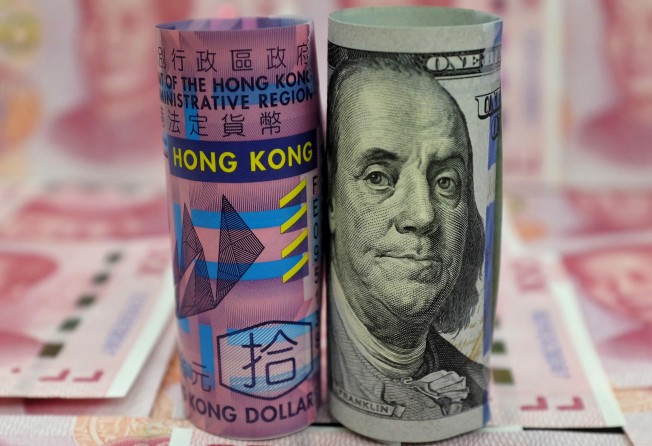Hong Kong dollar’s peg to the greenback remains strong and valid
The recent volatility of the Hong Kong dollar has less to do with its fundamentals than a sign that low interest rates are coming to an end and that the easy money has all been made. If so, it may even be a useful warning

The recent fall in the value of the Hong Kong dollar to a 35-year low against the greenback made good headlines and perhaps alarmed a few panicky investors. But was there ever any doubt that the Hong Kong Monetary Authority (HKMA) would intervene to maintain the local currency’s trading band under the US dollar peg or that it had ample reserves to do so?
Such was its raison d’etre. In the event, the HKMA intervened no less than 13 times and bought HK$51 billion to restore the currency from the weakest end of the range of HK$7.85 to below HK$7.80.
The pressure is now on local banks to close the gap – thanks to ample liquidity in recent years – between their low interest rates and rising rates in the United States, where the US Federal Reserve has demonstrated a willingness to tighten and restore monetary conditions to normal since the outbreak of the global financial crisis a decade ago.
For people in Hong Kong, this means instead of worrying about the local dollar, they should pay more attention to their mortgage payments – and also the potential for the property market to cool off.
Since the financial tsunami, roughly US$130 billion in hot money has flooded into the city. It has proved a bonanza for foreign investors. Now fund flows are reversing, thanks to rising interest rates and economic growth in the US. But the outflow has been no stampede, and nothing the local banking system can’t handle.
Interestingly, rather than commenting directly on the currency interventions, HKMA chief executive Norman Chan Tak-lam said the authority was fully committed to maintaining the purchasing power of the Hong Kong dollar. For most people, its interventions are an abstraction. What they are most concerned about is inflation and the local currency’s purchasing power. So far, there is no reason to fret.
But at a time of unusual capital movements, it’s a pastime in Hong Kong to raise questions about the three-and-a-half decades old system of pegging the local currency to the US dollar. If the concern is that ultra-loose US monetary policy had helped fuel the local real estate bubble in the past decade, well, in recent years, it’s our own banks that have been slow in matching US rate rises.
The peg remains a financial pillar of the city. It was helpful that International Monetary Fund chief Christine Lagarde defended it, saying the local currency board “is consistent with the fundamentals of the economy” and that there was no reason to change what was working. The recent volatility of the Hong Kong dollar has less to do with its fundamentals than a sign that low interest rates are coming to an end and that the easy money has all been made. If so, it may even be a useful warning.